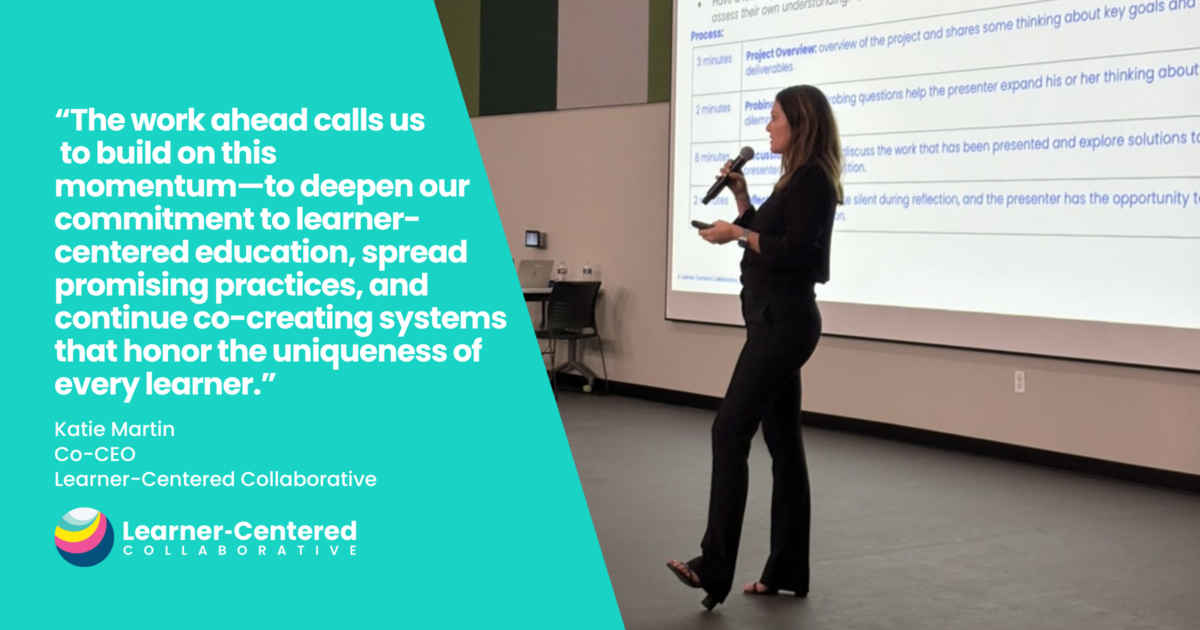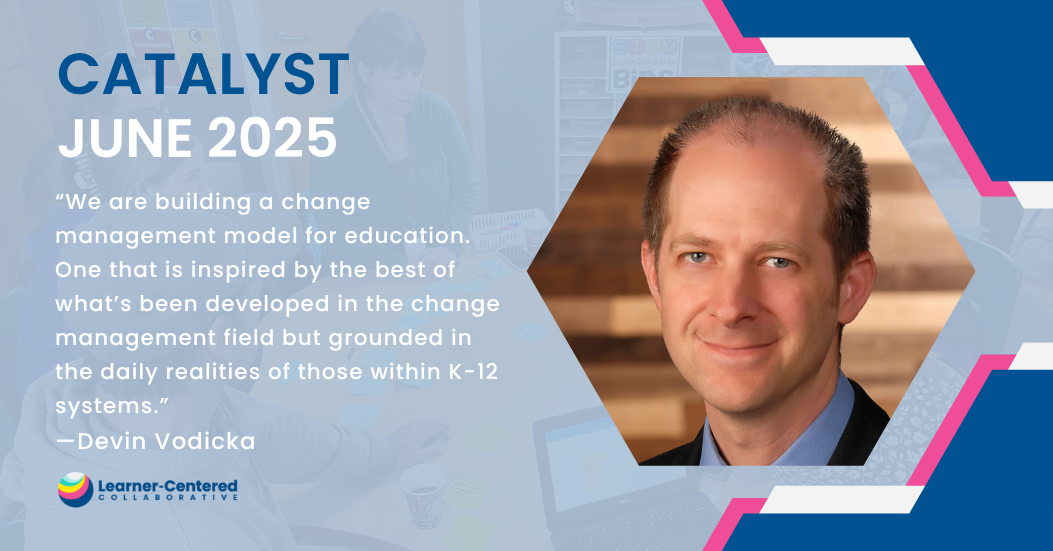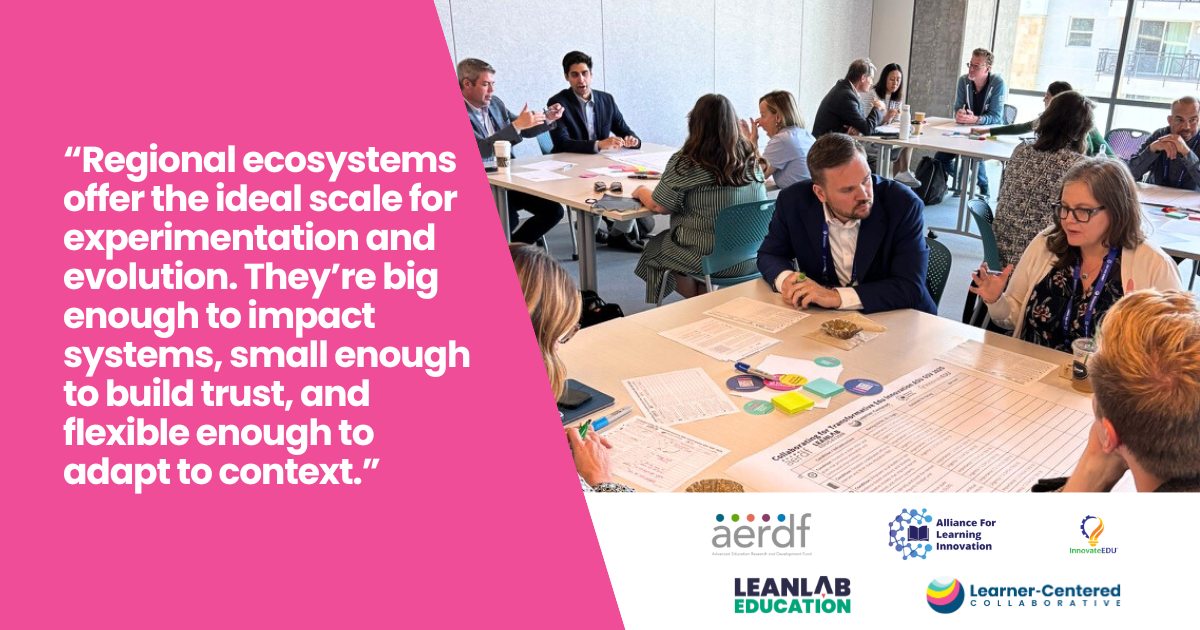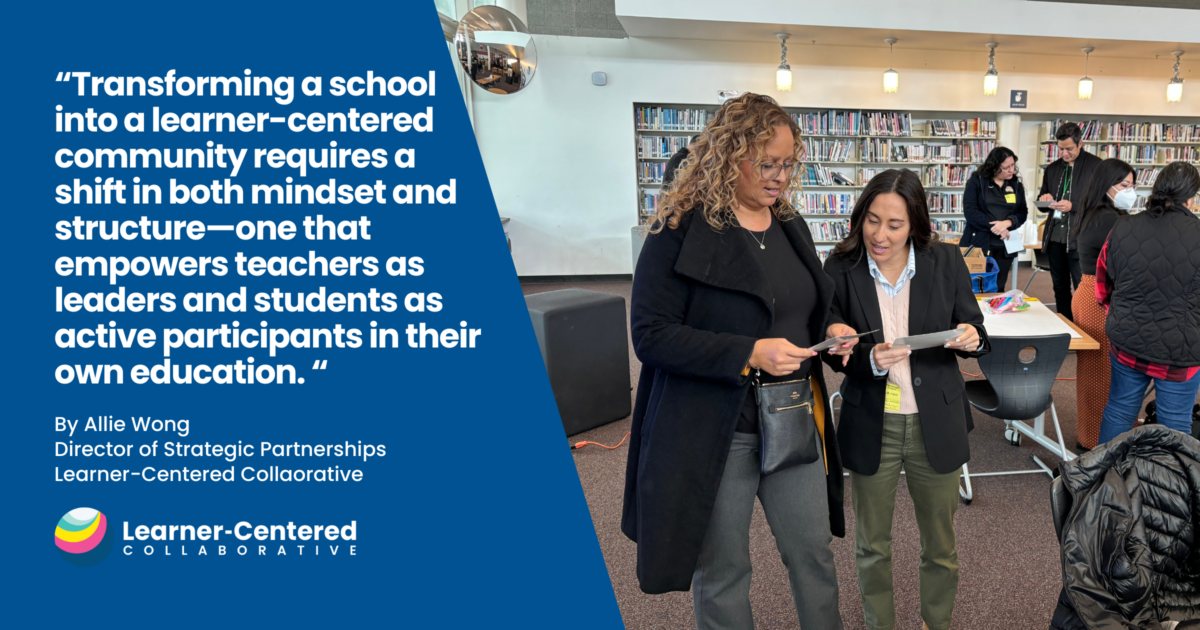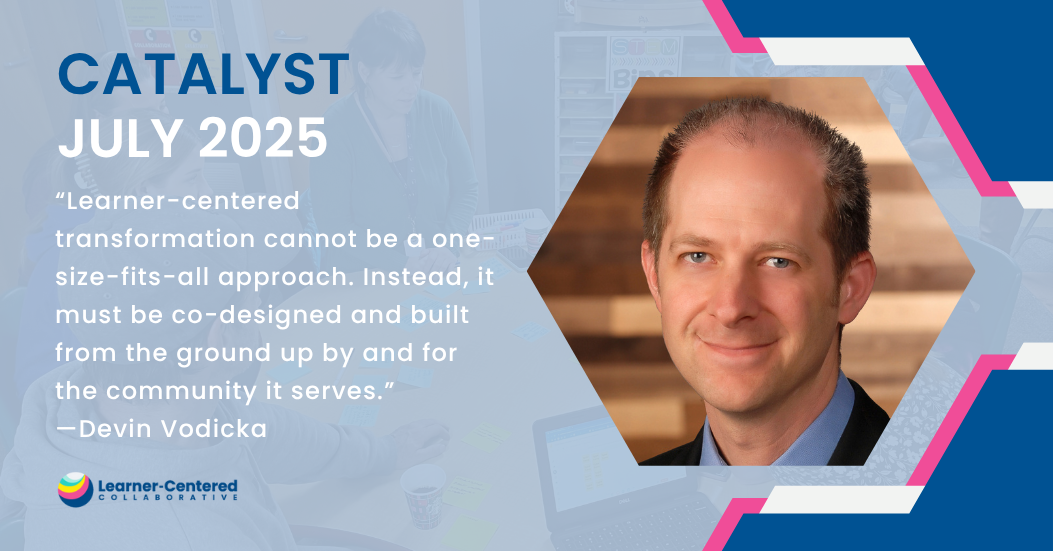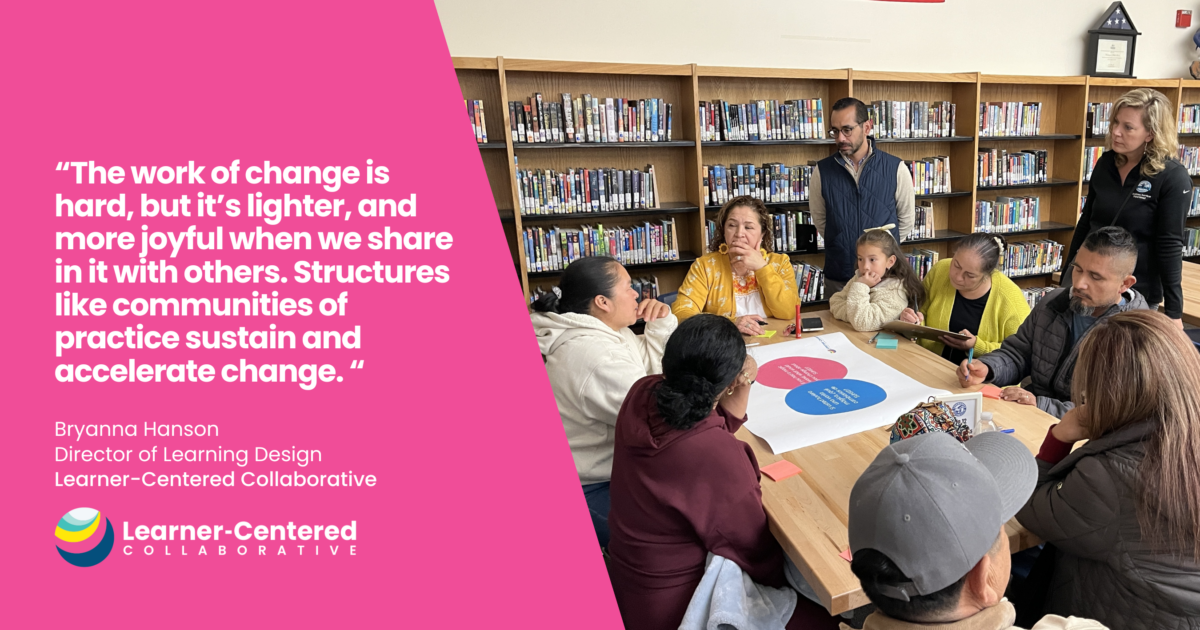Ready-Set-Goal! Then Reflect & Repeat
We often talk about goals at the beginning of the school year and the calendar year as these are really natural times to reflect about what’s gone well and what we might do differently. However, these “seasonal” goals often end up on a physical or digital shelf and forgotten by the time October or February rolls around.
Research has linked high quality goal-setting and reflecting routines to increased motivation, self-efficacy and engagement while decreasing anxiety.
In a learner-centered environment regular, ongoing reflection and goal-setting are embedded into practices and routines. Ideally they are happening throughout the year by all members of the community from the youngest of learners to the most senior of administrators. Here’s what it might look like:
What might goal-setting look like for learners?
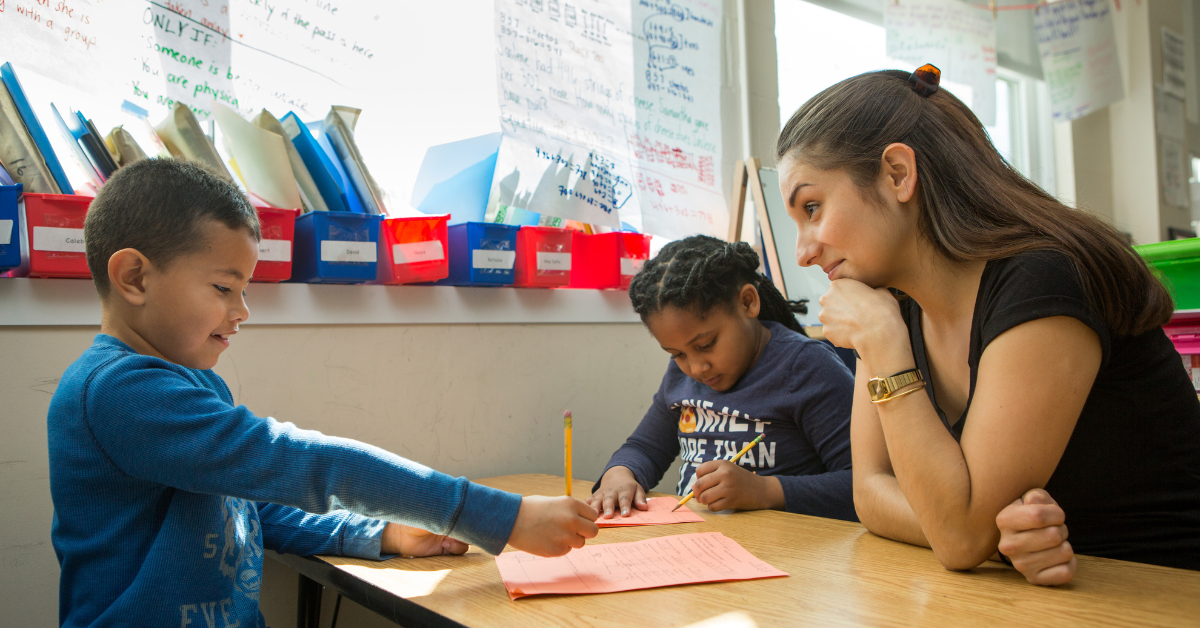
The goal in a learner-centered environment is for learners of all ages to take ownership of their learning. We call this learner agency. Learner-Centered Collaborative’s CIO, Katie Martin, has written about goal-setting and reflecting as key elements in developing learner agency and driving one’s own learning. Without goals, learners are directionless and without reflection they could plateau. Traditionally educators have set shared goals for all learners in the class. In this case learners may not be directionless but they may also not be motivated or engaged. Studies have shown, in fact, that engagement in school decreases the longer students are in school. Research also shows that providing real-world context for learning goes a long way in increasing engagement.
One way to start engaging learners in the goal-setting process is by making educator goals for learners transparent. This might look like sharing learning objectives with learners and helping them see how they will be able to use that knowledge or skill in an authentic context.
Beyond educator-set goals, it’s important to help learners develop their own goal-setting and reflecting muscles. This metacognitive skill is crucial for developing learner agency that will be sustained throughout their life. Ask learners to reflect on their strengths and where they want to grow in relation to academics and their personal aspirations. Then, support them with specific goal-setting frameworks and tools to scaffold the reflection and goal-setting process.
Finally, make time and space throughout the school year to regularly return to goals, reflect, adjust and celebrate progress.
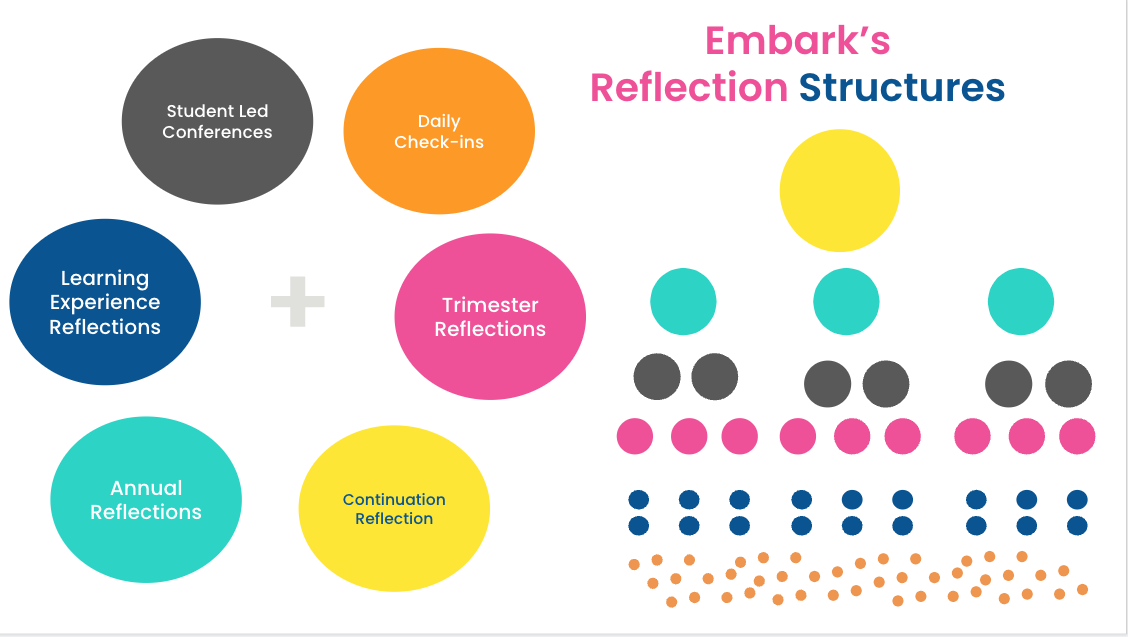
Want to think more deeply about goal-setting routines and how to meaningfully set goals with learners? Take our course, Develop Learner Agency.
What might goal-setting look like for educators?
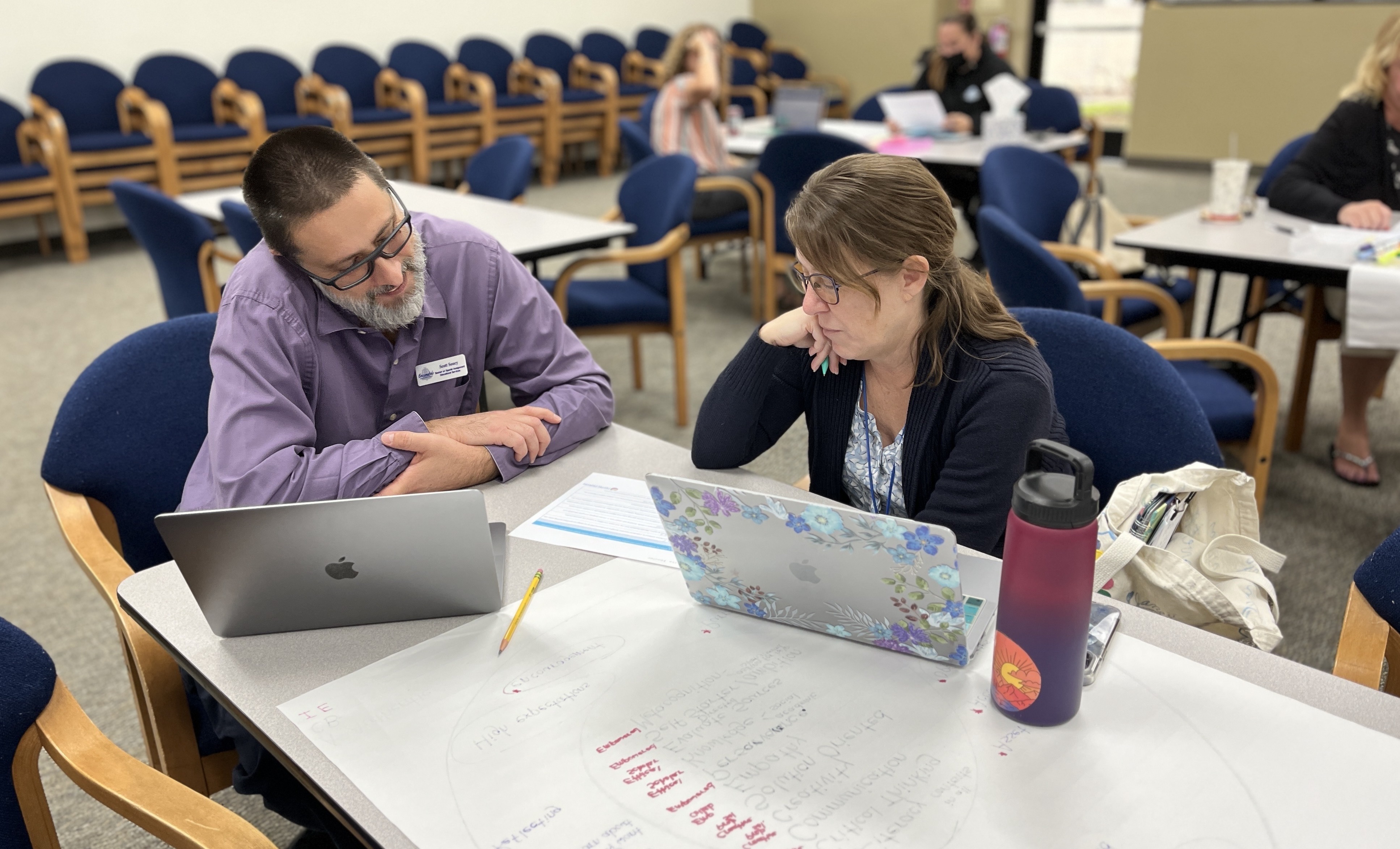
In a learner-centered environment, educators and leaders are learners too and goal-setting and reflecting is just as important for increasing self-efficacy and modeling a growth mindset. However, it can be challenging to find the time to sit down, deeply reflect and set goals. Goal-setting and reflecting routines, like with learners, don’t have to take hours. They can be built into small moments of the day or the week and longer reflection periods can be set aside for those bigger moments such as the end of a semester. Leaders should regularly ask educators on their teams to reflect and set goals, incorporating this time into team meetings and PLCs.
When considering what goals to set as an educator you can reflect on your personal experience of what is going well or what is challenging in the classroom. You can also reflect on student feedback as well as your strengths and growth areas related to learner-centered practices or your school/district’s instructional/learning model that help guide what teaching and learning should look like. These reflections can support you in setting goals, but remember to start small and think about growth over outcome. For example, a goal may be to increase the amount of voice and choice learners have in your classroom by providing a choice board in your lesson next week or redesigning one unit to be a playlist. These are specific, measurable, achievable and timely but they are also focused on growing the skill of providing voice and choice.
Take our learner-centered learning experiences self-assessment for educators to help reflect on your strengths and areas of growth. Then explore our related strategies or take one of our courses for educators.
What might goal-setting look like for leaders?

For leaders, goal-setting may seem overwhelming with all of the goals from outside entities such as the state, the county, or the district if you are a site-based leader. It is important to work towards those goals as part of your job and to make them as meaningful to you and your team as possible. However, goal-setting and reflecting shouldn’t stop there. As a leader you can support your team by creating a really clear focus of goals. Learner-Centered Collaborative CEO Devin Vodicka has written about a Scorecard, which helps narrow down the list of priorities and long-term goals for a system to be working towards.
Leaders can start personal goal-setting by thinking about the enabling conditions for learner-centered transformation. Are they present in your system? How can you, as an individual but also a member of a team, support changes and shifts that support learner-centered transformation? Then set specific and actionable goals that you can achieve by creating a 30-60-90 day action plan.
Interested in leveraging the design thinking process and improvement science to set and achieve meaningful goals? Take our course, Learner-Centered Leadership for Meaningful Change.
Growth is what really matters
Ultimately, no matter your role in the learning environment, goal-setting and reflecting is the key to improvement. It is less about achieving a final end state and more about continuously growing. As you work on your own goal-setting routines and practices or the ones of the educators or learners in your space, think about:
- Who is setting the goal?
- What is the goal?
- When and how frequently is reflection happening?
As long as the goal is personally relevant, actionable, growth-oriented and regularly returned to and adjusted, it should lead to meaningful growth.
Get started with your goal-setting and reflection practice using this free, downloadable goal-setting and reflection tool.
